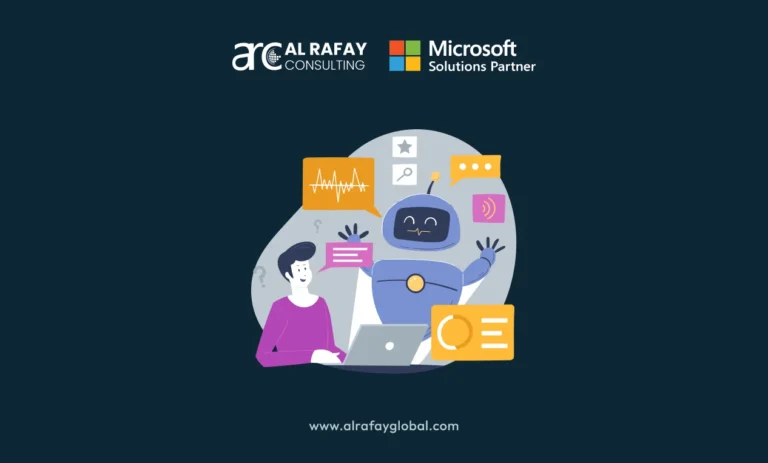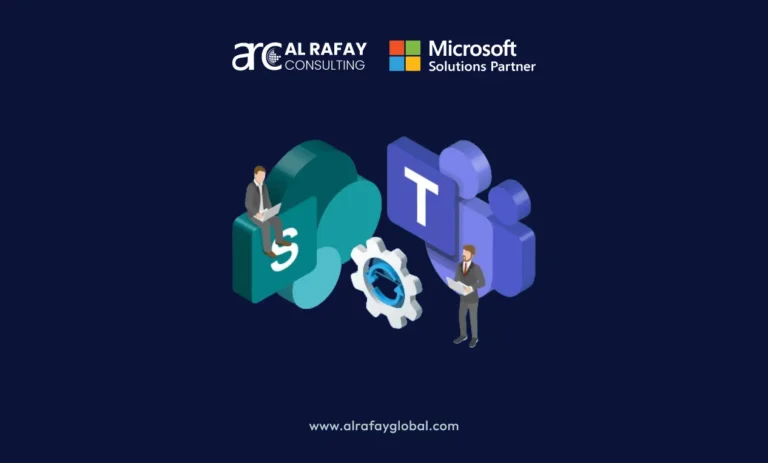Introduction
Artificial intelligence (AI) has made significant strides in revolutionizing industries, from healthcare to finance, through its ability to process large datasets and generate insights that would be impossible for humans to achieve manually. However, alongside these benefits, AI poses critical ethical challenges, particularly in the form of bias. AI bias refers to systematic and unfair discrimination that arises when algorithms perpetuate or amplify inequalities present in their training data or the environment in which they operate. According to a September 2023 survey by Aporia, 83% of machine learning professionals consider identifying AI bias to be one of their biggest challenges
Preventing AI bias is not just a technical requirement but a business and societal imperative. Left unchecked, AI bias can lead to discriminatory practices in hiring, lending, policing, and healthcare. According to a study done by Authenticx, A medical algorithm demonstrated racial bias, identifying only 18% of Black patients as needing additional care instead of the expected 46%, while 82% identified were white. It can further erode trust in AI systems, and stall innovation due to ethical and legal concerns. From a business standpoint, AI bias can expose companies to regulatory penalties, lawsuits, and reputational damage.
This article provides an in-depth guide for AI practitioners and business owners on how to prevent AI bias. We will explore the sources of AI bias, methods for detecting it, and strategies to mitigate it across various stages of AI development.
Understanding AI Bias
AI bias occurs when an algorithm produces systematically unfair outcomes for certain groups or individuals. Bias in AI can stem from different sources, including the data used for training, the algorithms themselves, or the socio-technical context in which AI systems are deployed. In a study done by Jama Network it was found that in a systematic review of 517 studies featuring 555 neuroimaging-based AI models for psychiatric diagnostics, most models exhibited a high overall risk of bias and limited clinical applicability.
Types of AI Bias
1. Data Bias
Data bias happens when the training dataset does not accurately reflect the real-world distribution of the population or problem it is meant to address. This can occur due to underrepresentation of certain demographic groups, or historical biases embedded in the data. For example, a facial recognition system trained primarily on images of light-skinned individuals may perform poorly on darker-skinned faces.
2. Algorithmic Bias
Algorithmic bias emerges when the structure or mechanics of the algorithm unintentionally prioritize certain features or outcomes over others. For instance, a hiring algorithm that overemphasizes certain qualifications, such as a degree from a particular university, might perpetuate bias against candidates from underrepresented backgrounds who are less likely to have that qualification.
3. Societal Bias
Societal bias reflects pre-existing inequalities and stereotypes present in the environment from which the AI system learns. This form of bias is particularly concerning because AI systems if left unchecked, can exacerbate these inequalities. For example, predictive policing algorithms have been shown to disproportionately target minority communities based on biased historical crime data.
Consequences of AI Bias
AI bias has severe real-world consequences. In 2018, a widely reported case involved an AI-driven recruitment tool that was biased against women for technical roles due to a training dataset primarily composed of male candidates. Similarly, facial recognition systems have demonstrated higher error rates for people of color, which can lead to unjust outcomes in law enforcement settings.
AI Bias Consequence | Example |
Discriminatory hiring practices | AI recruitment tools favoring male over female candidates in tech jobs |
Inaccurate medical diagnoses | AI models underdiagnosing illnesses in minority groups due to lack of representative healthcare data |
Biased policing strategies | Predictive policing tools disproportionately target communities of color based on biased datasets |
Sources of AI Bias
1. Biased Training Data
The quality of data used to train AI models plays a critical role in determining the fairness of outcomes. Two primary issues can arise:
a. Lack of Diversity in Data
When training datasets are skewed or unrepresentative, the AI system may perform poorly for certain groups. For instance, an image classification model trained on predominantly Western datasets may misclassify objects from non-Western cultures.
b. Historical Biases Embedded in Data
Training AI models on data that reflect historical discrimination or biases can perpetuate these biases. For example, using historical hiring data that predominantly reflects male candidates in senior roles may result in an AI system that is less likely to recommend women for similar positions.
Algorithmic Factors
Algorithmic bias can also stem from the mechanics of the model itself.
a. Model Complexity and Overfitting
Complex models, especially those in deep learning, may overfit to biased patterns in the training data, reinforcing unwanted biases during inference. Overfitting occurs when the model becomes too specialized in its training data, losing generalization to diverse real-world scenarios.
b. Feature Selection and Weighting
Choosing inappropriate features or assigning disproportionate weight to certain features can lead to biased results. For example, a credit scoring algorithm that places undue importance on zip codes may result in socioeconomic bias.
c. Reinforcement of Bias in Unsupervised Learning
In unsupervised learning, models cluster or classify data without explicit labels. When this clustering is based on biased features, the resulting model can amplify pre-existing biases, reinforcing stereotypes and inequalities.
Human Bias in AI Development
Developers and data scientists can introduce bias into AI systems through unconscious decisions, such as which features to prioritize, or through inadvertent oversight of certain aspects of the model’s behavior.
a. Implicit Bias
Implicit biases in developers can be reflected in AI systems. For example, a team that lacks diversity may unintentionally overlook the needs of underrepresented groups during model development.
b. Socio-economic and Cultural Contexts
The socio-economic and cultural background of the developers can also influence the way an AI system is designed, leading to systems that may be more effective in some cultures but ineffective or harmful in others.
Identifying AI Bias
Bias Detection Methods
a. Statistical Tools for Measuring Bias
AI practitioners can employ statistical tools to detect bias in models. Some of the widely used fairness metrics include:
Disparate Impact Ratio: Measures whether the outcomes of an AI model disproportionately affect certain groups.
Equal Opportunity Difference: Evaluates whether a model’s accuracy varies between demographic groups.
b. Audits for Bias in Data Pipelines
Regular audits of the data pipeline can help identify bias early in the development process. By assessing datasets for diversity and representation, teams can avoid biased training data that could affect model performance.
Real-World Testing
Testing AI models in a variety of environments is crucial to identify hidden biases that may not be apparent during training.
a. Deploying AI Models in Diverse Environments
By exposing models to diverse user bases, biases that only affect specific populations can be identified and corrected.
b. Gathering Feedback from Underrepresented Groups
Actively seeking feedback from underrepresented groups is essential for understanding how the model performs across different demographics. User studies, surveys, and focus groups can provide invaluable insights into potential biases.
Transparency and Explainability
Increased transparency can significantly aid in identifying and mitigating AI bias.
a. Tools for Transparency (LIME, SHAP)
Tools like LIME (Local Interpretable Model-Agnostic Explanations) and SHAP (Shapley Additive exPlanations) provide explainability for machine learning models, allowing developers to understand how specific features contribute to the model’s decisions.
b. Importance of Interpretability
Interpretability is key in detecting bias because it enables practitioners to trace biased decisions back to their sources, whether in the data, the algorithm, or the deployment environment.
Strategies to Prevent AI Bias
1. Data-Level Strategies
A. Diversify Training Data
Ensuring that training data is representative of all user groups is fundamental to preventing bias. Data collection should include various demographic, geographic, and socioeconomic factors to create a balanced dataset.
B. Data Augmentation
Data augmentation techniques, such as oversampling underrepresented groups, can help to counteract biases in imbalanced datasets. By simulating balanced datasets, AI models can learn to generalize better across different populations.
C. Bias Mitigation During Data Collection
Care must be taken to remove harmful labels, anonymize sensitive attributes (e.g., gender, race), and neutralize historical biases present in datasets. This can involve preprocessing steps to “de-bias” the data before it is used in training.
Data-Level Strategy | Description |
Diversifying Training Data | Collecting data from diverse sources to represent various user demographics |
Data Augmentation | Techniques to balance datasets (e.g., oversampling underrepresented groups) |
Bias Mitigation During Data Collection | Removing harmful labels and anonymizing sensitive attributes to neutralize historical biases |
2. Algorithm-Level Strategies
A. Bias-Resistant Algorithms
Fairness-aware algorithms, such as adversPoppins debiasing and models that incorporate fairness constraints, are essential for reducing bias during the AI training process. These algorithms are designed to directly account for fairness objectives, enabling developers to create models that prioritize equitable outcomes alongside accuracy. By integrating fairness considerations into the algorithm’s architecture, organizations can proactively address potential biases before they manifest in real-world applications.
Key Benefits of Bias-Resistant Algorithms:
Proactive Bias Reduction: Actively addresses biases during training, reducing the likelihood of biased outcomes.
Enhanced Fairness: Ensures that the model’s decisions are equitable across different demographic groups.
Greater Accountability: Provides a framework for organizations to demonstrate their commitment to ethical AI development.
B. Regularization and Feature Engineering
Regularization techniques are essential for minimizing bias in AI models. By penalizing overfitting, these techniques help make the model less sensitive to noisy or biased patterns in the data. This results in a more generalized model that performs well across diverse data sets. Additionally, feature engineering plays a crucial role in bias mitigation. By carefully selecting features that are less likely to encode unwanted societal biases, developers can further enhance the fairness of the model.
Key Techniques:
Regularization: Helps maintain model robustness by preventing overfitting to biased data patterns.
Feature Selection: Identifies and retains features that contribute positively to model fairness.
C. Post-Processing Techniques
In certain scenarios, bias can be mitigated through post-processing techniques, which involve adjusting model outcomes to ensure fairness. These techniques are applied after the model has made its predictions, allowing for corrections to be made based on fairness considerations. For instance, equalizing outcomes can help balance the model’s accuracy across different groups by adjusting decision thresholds. This approach provides a flexible solution for enhancing fairness without necessitating changes to the underlying model architecture.
Examples of Post-Processing Techniques:
Outcome Equalization: Adjusts decision thresholds to ensure fair treatment across demographic groups.
Calibration Adjustments: Fine-tunes probabilities to achieve fairness in predicted outcomes.
3. Evaluation and Testing
A. Continuous Monitoring
Once AI models are deployed, continuous monitoring becomes essential to ensure they maintain fairness and performance over time. This involves systematically tracking model outcomes and performance metrics to identify any potential drift that may indicate emerging biases or degradation in efficacy. Regular audits and assessments help organizations stay vigilant against unintended consequences that may arise from changing data environments or user behavior. Additionally, recalibrating models as needed can ensure that they adapt effectively to new information, thereby maintaining equitable outcomes. Continuous monitoring is not just a best practice; it is a proactive approach that helps organizations uphold their commitment to ethical AI deployment and ensures the integrity of their systems throughout the AI lifecycle.
B. Bias Testing in Production
Bias testing should extend beyond the initial development phase and continue even after the model is deployed. Regular assessments, such as periodic fairness evaluations, are crucial for ensuring that the AI model remains unbiased as it encounters new data in real-world scenarios. As the model interacts with diverse user groups and evolves with fresh data, ongoing bias testing can help detect any shifts in performance or emerging discriminatory patterns. By implementing rigorous and systematic bias testing in production, organizations can safeguard against harmful outcomes and ensure that their AI systems uphold the principles of fairness throughout their operational life.
C. Fairness Benchmarks
Establishing industry-wide benchmarks for bias mitigation is vital for ensuring consistency across AI applications. These benchmarks serve as reference points that organizations can adhere to when developing and deploying AI systems. By aligning their practices with established standards, organizations can better integrate best practices for fairness into their AI development processes. Such benchmarks not only promote transparency but also foster accountability within the industry, encouraging continuous improvement in the field of AI ethics. As more organizations adopt these fairness benchmarks, a collective effort towards reducing bias can emerge, ultimately leading to more equitable AI solutions that benefit a broader range of stakeholders.
4. Human Involvement in AI
A. Diverse Teams
Building diverse teams of AI developers is a critical strategy for mitigating biases during model design and deployment. Teams comprised of individuals from various backgrounds bring a wealth of perspectives and experiences to the table. Here are some key benefits of diverse teams:
Increased Awareness of Bias: Team members from different backgrounds are more likely to recognize biases that may not be evident to a more homogenous group.
Enhanced Creativity: Diverse perspectives foster innovative solutions, leading to more effective AI models.
Broader Understanding of Societal Impact: Team diversity ensures that AI systems consider the needs and concerns of various communities.
Improved Trust and Adoption: An inclusive approach builds trust with users who may be adversely affected by biased algorithms.
By fostering an inclusive environment where diverse voices are heard and valued, organizations can ensure that AI systems are developed with a broader understanding of societal impacts. Ultimately, diverse teams are not just a moral imperative; they are a practical necessity for creating AI systems that serve all members of society equitably.
B. Human Oversight
Establishing robust feedback loops that facilitate human intervention in AI decision-making processes is essential for minimizing harmful outcomes. Key aspects of human oversight include:
Human-in-the-Loop (HITL) Systems: Allow humans to review and approve AI decisions, particularly in high-stakes scenarios.
Error and Bias Detection: Human oversight helps catch errors or biases before they escalate into larger issues.
Collaboration: Promotes a collaborative approach, where AI acts as a supportive tool rather than a replacement for human judgment.
Continuous Evaluation: Ongoing human feedback can lead to the refinement of AI systems, enhancing their reliability and fairness.
By incorporating human oversight, organizations can ensure that AI operates within ethical boundaries while fostering accountability and transparency.
C. Bias Education and Training
Training AI developers to recognize and mitigate bias is crucial for the long-term success and ethical deployment of AI systems. Key elements of effective bias education and training include:
Educational Programs: Incorporate workshops, seminars, and online courses focused on bias, fairness, and ethics into the development workflow.
Skill Development: Equip developers with the knowledge and skills necessary to identify potential biases in algorithms and data sets.
Ongoing Learning: Encourage continuous education, as the field of AI and its ethical considerations are continually evolving.
Cultural Awareness: Foster a culture of awareness and responsibility around ethical AI development.
By prioritizing bias education and training, companies can empower their teams to create AI systems that not only excel in performance but also uphold the principles of fairness and equity, thereby contributing positively to society.
The Role of Regulations and Ethical Guidelines
Current Regulations
In recent years, the rapid advancement of artificial intelligence (AI) technologies has raised significant concerns regarding bias and discrimination. As a response to these challenges, several regulations have emerged to ensure that AI systems operate fairly and transparently. One of the most notable regulations is the General Data Protection Regulation (GDPR), implemented in the European Union. The GDPR emphasizes the importance of fairness in automated decision-making processes, particularly those that can significantly impact individual rights. It requires organizations to establish mechanisms that allow users to understand how decisions affecting them are made, fostering an environment of accountability and trust.
Similarly, the Algorithmic Accountability Act in the United States aims to mitigate the risk of bias in AI systems. This legislation mandates that companies conduct regular bias audits for their AI applications, particularly those that have a direct impact on consumers. These audits serve to identify and rectify any discriminatory practices, ensuring that AI systems are not only efficient but also ethical. By holding organizations accountable, these regulations pave the way for more responsible AI deployment.
Ethical Frameworks
Beyond regulatory measures, ethical frameworks play a crucial role in guiding the development and implementation of AI technologies. One prominent example is the IEEE’s Ethics in AI guidelines, which offer a structured approach for developers and organizations. These guidelines emphasize the importance of integrating principles of fairness, transparency, and accountability into the design and deployment of AI systems from the very beginning. By encouraging developers to prioritize ethical considerations, these frameworks help mitigate biases and promote more equitable outcomes.
Additionally, ethical frameworks provide a common language for stakeholders involved in AI development, facilitating discussions about the potential implications of AI technologies. They serve as a vital resource for organizations looking to navigate the complex landscape of AI ethics, ensuring that the technologies they create are not only innovative but also socially responsible.
Future of AI Governance
As AI continues to permeate various sectors, the need for comprehensive global regulations will only intensify. This calls for international cooperation on establishing AI standards that transcend national borders. It is essential to ensure that AI systems developed in one region do not perpetuate bias or harm individuals in another. The future of AI governance will likely involve a hybrid model that combines regulatory oversight with industry-led initiatives aimed at promoting ethical AI development.
Such a collaborative approach could foster a more inclusive dialogue on the ethical implications of AI, encouraging a diverse array of perspectives and experiences. Ultimately, establishing robust regulations and ethical guidelines is essential for shaping a future where AI technologies contribute positively to society, ensuring that they are both effective and equitable.
Conclusion
In summary, preventing AI bias requires addressing data quality, algorithm design, evaluation, and human oversight. Understanding the sources of bias is essential for mitigation. AI practitioners should use bias detection tools, diversify training data, and implement fairness-aware algorithms. Organizations must also adopt regulations that promote transparency and accountability, ensuring AI systems are ethical and trustworthy.
For enterprise AI consulting services for your organization, connect with our team of Microsoft-certified AI experts at Al Rafay Consulting.













